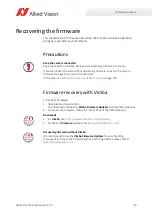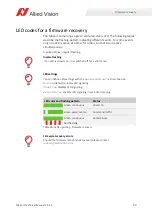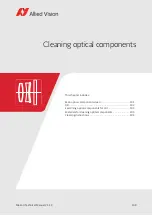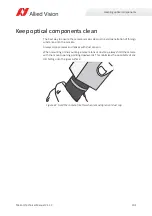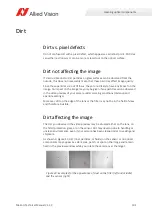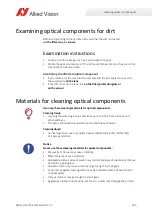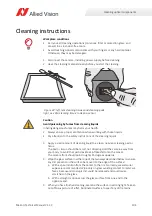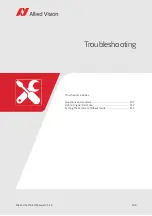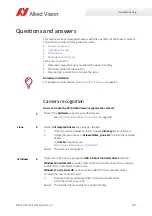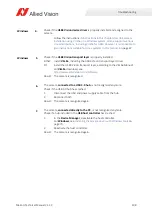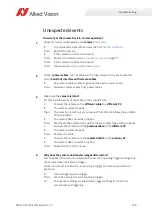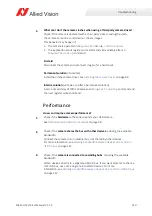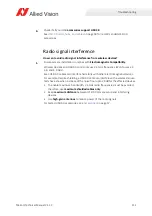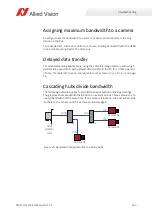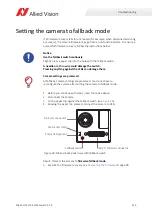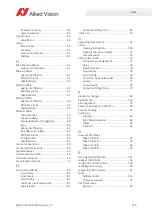
Troubleshooting
112
Mako U Technical Manual V1.1.3
Optimizing performance
Dividing bandwidth between devices on a
common USB 3.0 bus
The following example is about 2 cameras in an ideal setup:
•
Control traffic is ignored.
•
The possibility of the host being busy with other tasks is ignored.
•
Cameras share 100% bus bandwidth.
•
Cameras need 100% bus bandwidth in total.
•
Cameras stream in the same way because they are the same model and have
identical settings.
•
No other device is connected.
Result:
•
Bandwidth is divided by two, they get 50% bandwidth each. (For 3 cameras,
the bandwidth is 33.3% each.)
•
If one camera sends no data, the other camera will be assigned 100% band-
width. To always assign 50% to both cameras, they have to be controlled to use
no more than 50% bandwidth each.
•
If the PC does not receive images from a camera, images may be delayed or
even dropped.
Reducing bandwidth use for a camera
To insure sufficient bandwidth to each camera, you can limit maximum bandwidth
use by the
DeviceLinkThroughputLimit
feature.
See
USB Features Reference
at
Additional Documents
for the Mako U camera:
https://www.alliedvision.com/en/support/technical-documentation
.
Increase bandwidth
•
To obtain maximum bandwidth, attach the camera to a separate bus. Sharing
bandwidth with other devices decreases maximum bandwidth for the Mako U
camera.
•
For maximum bandwidth, use a current version host controller card
(see
USB 3.0 cards, hubs, and cables
•
USB3 Vision devices use bulk transfer. When these devices are combined using
other transfer modes, bandwidth may be assigned differently.
•
Control bandwidth by assigning the desired amount to the separate cameras.

